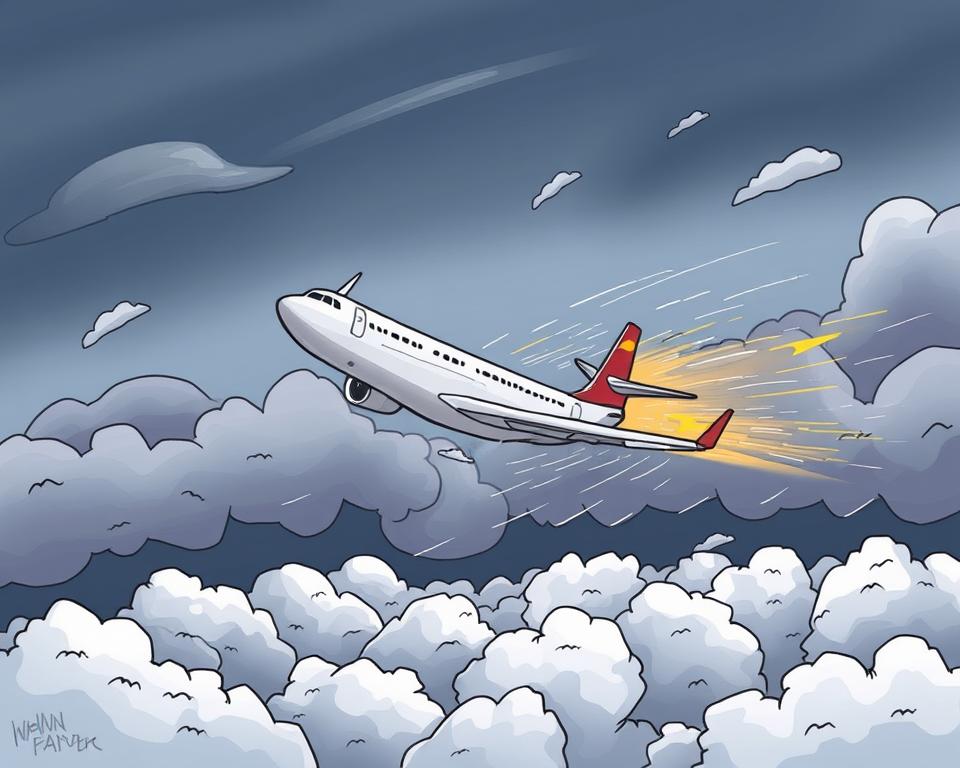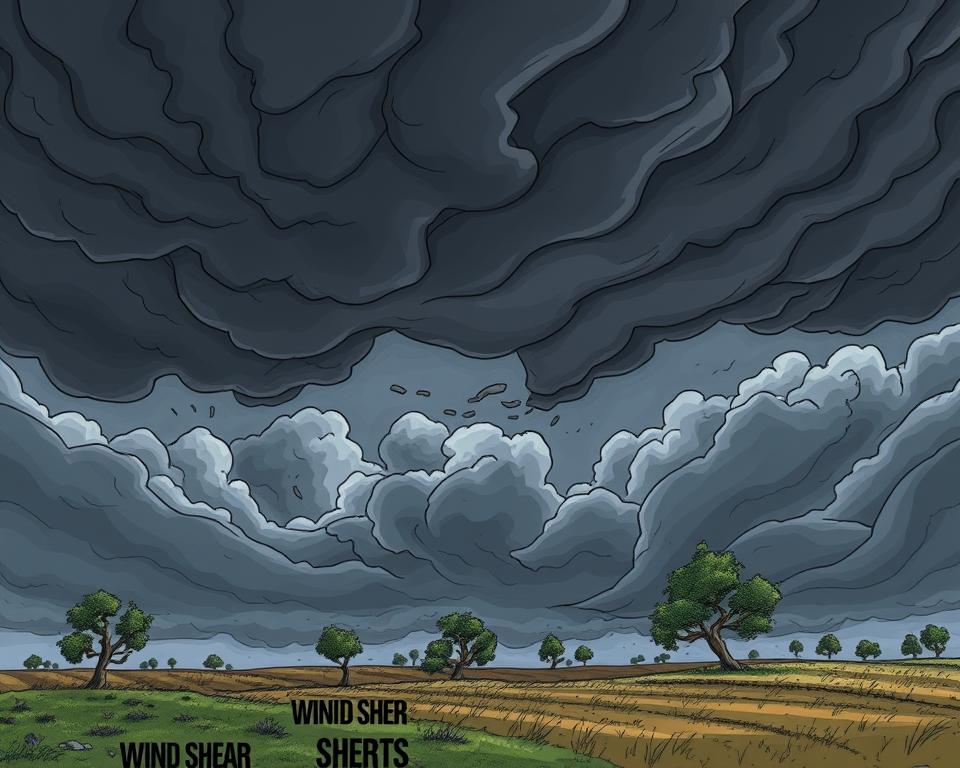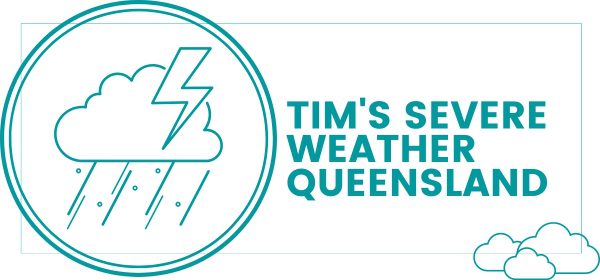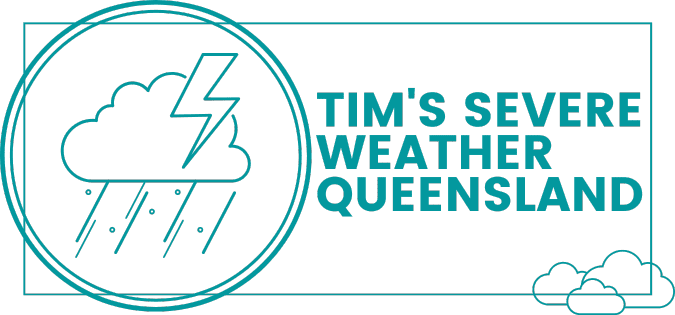Table of Contents
Every year, unexpected wind shear weather patterns are believed to impact numerous aviation incidents worldwide. This unpredictable meteorological phenomenon is critical, yet not as well-discussed as thunderstorms or hurricanes. It represents sudden changes in wind speed and direction over a short distance in the atmosphere. Meteorologists use wind shear maps to predict severe weather conditions, making it essential for understanding weather systems.
Why is wind shear pivotal in meteorological studies? It involves the interaction between horizontal wind shear across different air masses and vertical changes. For severe weather forecasting, vertical wind shear especially influences thunderstorm development, changing winds’ speed and direction with altitude.
Wind shear shapes phenomena from the spread of a thunderstorm’s anvil to dangers in downbursts and microbursts. As Doppler radar reveals patterns, wind shear’s profile is crucial for forecasting and severe weather preparedness.
This section will explore wind shear’s types, aviation safety implications, atmospheric forces, and tools for tracking and predicting air current changes.
Understanding Wind Shear: Definition and Types
Wind shear represents the change in wind velocity at right angles to the wind’s course, occurring over a brief distance. It’s a sudden variation in wind speed and direction affecting weather and flight stability. Recognizing various types and impacts of wind shear, from wind shear weather phenomena to wind shear aviation challenges, is essential.
Vertical vs Horizontal Wind Shear
Vertical wind shear changes wind speed or direction with altitude. It’s crucial for understanding thunderstorms and the potential for severe weather, including wind shear tornado development. Horizontal wind shear, in contrast, alters wind speed or direction across landscapes, affecting aircraft during take-offs and landings — a key aviation safety issue.
The Phenomenon of Speed and Directional Shear
Speed shear influences wind speed at different atmospheric heights, impacting storm dynamics significantly. Alternatively, directional shear changes wind direction with altitude. It can cause air mass rotation, often leading to cyclone formation. This responds to questions like what is wind shear in a cyclone, highlighting its critical role.
Wind Shear Profiles and Their Importance in Weather Analysis
Meteorologists use wind shear profiles to predict changes in wind speed with height, essential for precise weather forecasts. These profiles assist in evaluating the likelihood of severe weather events, enabling timely alerts. Such events are greatly impacted by unpredictable wind patterns.
Grasping the nuances of wind shear and its various forms is crucial for aviation and meteorology. It offers vital insights into managing associated risks effectively.
Wind Shear Aviation
Wind shear poses a notable challenge in aviation, affecting both safety and flight performance. The key to managing the risks lies in understanding how sudden changes in wind impact flight. This section delves into the hazards of wind shear and its influence during critical flight stages.
Aircraft are most at risk of wind shear during takeoff and landing. Experts agree that changes in horizontal airspeed of over 30 knots for light aircraft and 45 knots for airliners at higher altitudes raise concerns. Changes in vertical speed exceeding 4.9 knots, especially at lower altitudes, present significant risks. This gives pilots limited time to respond.
The microburst is among the most dreaded wind shear events. This sudden, strong air movement can drastically alter wind speed, endangering aircraft during takeoff and landing. The ability to foresee and interpret these conditions through wind shear maps is critical for safe flight plans.

Aspect of Wind Shear |
Impact on Aviation |
Preventive Measures |
|---|---|---|
Horizontal Wind Shear |
Affects aircraft stability and control |
Advanced navigational aids and pilot training |
Vertical Wind Shear |
Can lead to sudden loss or gain of altitude |
Use of real-time wind shear weather monitoring systems |
Microbursts |
Potentially catastrophic during takeoff/landing |
Implementation of predictive technologies in wind shear map |
To combat wind shear effects, the aviation sector continuously improves safety measures and tech. Key strategies include using real-time wind shear data and providing pilots with advanced training on handling sudden weather shifts. Wind shear’s danger primarily stems from its unpredictability and intense impact, notably at low altitudes. This makes it a major aviation safety concern.
What Causes Wind Shear: Exploring Atmospheric Dynamics
Wind shear phenomena stem from atmospheric changes. These include temperature shifts, pressure differences, and the influence of local geography. Understanding these causes helps manage wind shear’s effect on the environment and human operations.
The Role of Temperature Gradients and Pressure Levels
Horizontal wind shear is affected by temperature variations across different altitudes and regions. The concept of thermal wind links wind changes to horizontal temperature differences. This phenomenon is evident in the jet stream, where winds at high altitudes experience significant shear due to sharp temperature changes.
How Local Topography Contributes to Wind Shear Conditions
Geographical structures like mountain ranges and buildings significantly influence wind shear. They can alter airflows, causing uplifts and downdrafts. These effects intensify atmospheric wind shears, impacting structural design and aviation paths in vulnerable areas.
This understanding assists in weather prediction and improves wind shear mapping. It’s critical for aeronautics and meteorology industries.
Factor |
Effect on Wind Shear |
Example |
|---|---|---|
Temperature Gradient |
Increases wind speed variability with altitude |
Jet streams at high altitudes |
Pressure Levels |
Induces directional changes in wind flow |
High pressure zones impacting flight routes |
Local Topography |
Modifies wind patterns, potentially increasing wind shear intensity |
Mountain passes affecting wind directions |
Unpacking the Dangers of Shear in Natural Phenomena
Wind shear impacts natural events devastatingly. It’s vital to grasp its dangers in aviation, weather, and cyclones. Understanding this helps in planning and mitigating risks.

Why Is Wind Shear Dangerous for Aircraft?
During takeoff and landing, wind shear threatens aircraft. A swift change in wind direction or speed can jeopardize flight performance, risking accidents. Microburst events pose a particular hazard, suddenly shifting wind conditions. This challenges pilots significantly.
Shear’s Contribution to Tornado and Thunderstorm Formation
Wind shear’s effect on severe weather, including tornadoes and thunderstorms, is profound. It involves wind speed and direction shifts with altitude, promoting storm rotation. This rotation leads to more potent, enduring severe weather phenomena. Thus, wind shear is critical for tornado genesis and persistence.
Cyclonic Shear: What Is Wind Shear in a Cyclone?
In cyclones, wind shear has a complex role. Low levels of shear can organize and strengthen a cyclone. However, high vertical wind shear disrupts its structure. It scatters the heat and moisture vital for the cyclone’s growth, weakening or even stopping its formation.
Phenomenon |
Impact of Wind Shear |
Typical Outcome |
|---|---|---|
Aircraft Performance |
Loss of control, altitude fluctuations |
Potential accidents during critical flight phases |
Tornado Formation |
Increases rotation within thunderstorms |
Enhanced severity and longevity of storms |
Cyclone Development |
Can inhibit or disrupt structure |
Reduced cyclone intensity or dissipation |
Tracking and Predicting Wind Shear: Tools and Maps
Understanding what causes wind shear is key to improving aviation safety. Detecting its subtle dangers is crucial for protecting the skies. Experts use advanced tools like Doppler radar and wind shear maps for insights. These help identify areas of varying wind speeds, aiding forecasters in analyzing wind conditions.
Wind shear maps reveal the complex interactions of atmospheric pressure systems. This technology, along with radar, helps dissect the atmosphere to uncover wind shear causes. Meteorologists can then offer better advice to the aviation industry. This leads to a deeper understanding of how land shapes and atmospheric forces interact, aiding flight planning.
Lidar technology offers a new perspective on atmospheric anomalies, complementing radar’s role. It allows meteorologists to detect low-level wind shear with unparalleled accuracy. This is vital for aircraft safety during take-off and landing, where slight disturbances can have major effects. For more details, the study on lidar technology explores its potential to improve weather forecasting and flight safety.
FAQ
Q: What is wind shear in meteorology?
A: Wind shear in meteorology is the change in wind speed or direction across a brief distance in the atmosphere. It plays a vital role in weather patterns, helping predict severe weather events.
Q: What’s the difference between vertical and horizontal wind shear?
A: Vertical wind shear marks changes in wind speed or direction with height while horizontal wind shear covers changes at the same altitude across different areas. Both are pivotal for weather conditions and airplane safety.
Q: How do speed shear and directional shear affect weather?
A: Speed shear, the variation in wind speed at different altitudes, influences severe weather development. Directional shear involves shifts in wind direction and is crucial for tornado formation. Each plays a role in storm development and strength.
Q: Why are wind shear profiles important in weather analysis?
A: Wind shear profiles track wind speed and direction changes at various altitudes. They are essential for assessing atmospheric stability and predicting severe thunderstorms and cyclones.
Q: How does wind shear present a danger in aviation?
A: Wind shear with swift changes in wind speed and direction creates hazards during flight’s critical phases like takeoff and landing. For example, microburst wind shear can drastically reduce aircraft control, risking catastrophic outcomes.
Q: What causes wind shear?
A: Atmospheric dynamics like temperature differences, pressure levels, and air mass interactions cause wind shear. Local geography, such as mountains or buildings, can also heighten wind shear effects.
Q: Why is wind shear particularly dangerous for aircraft?
A: Aircraft encounter danger from sudden wind speed and direction shifts, particularly near the ground. These changes can adversely impact an airplane’s performance and control, elevating accident risks during takeoff or landing.
Q: How does wind shear contribute to tornado and thunderstorm formation?
A: Wind shear facilitates storm organization and longevity by fostering rotation within storms. Specifically, vertical wind shear is crucial for supercell thunderstorms, which often lead to tornadoes.
Q: What is wind shear in a cyclone, and why is it significant?
A: Wind shear in a cyclone describes the alteration in wind direction and speed with altitude. Significant vertical wind shear can disrupt cyclones’ updrafts, stifling their growth and possibly weakening them.
Q: How are wind shear maps used in tracking and predicting weather?
A: Wind shear maps outline the presence and intensity of wind shear, enabling meteorologists to spot shear zones. These maps are vital for forecasting severe weather and guiding aviation operations.
Source Links
- Wind shear
- NOAA’s National Weather Service – Glossary
- What is wind shear? An atmospheric scientist explains how it can disrupt air travel and tear apart hurricanes


